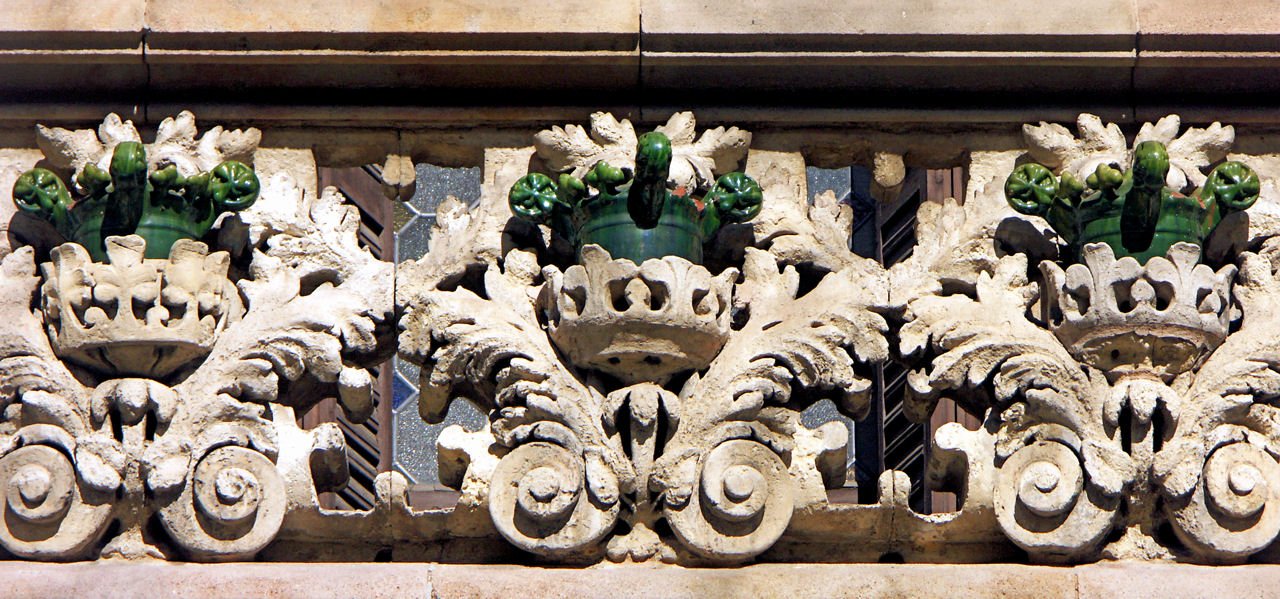#2041. Baroque Facade Frieze with Ceramic Inserts
The image depicts a remarkable architectural element of a historic building facade — a decorative frieze with Baroque motifs. This fragment showcases exquisite stone casting, characteristic of the luxuriant decorative architecture of the 17th-18th centuries.
The frieze consists of a repeating ornamental module: stylized stone crowns or vases with elegant green ceramic elements in the form of leaves or fruits, likely symbolizing abundance. Each such element is framed by lush volutes and floral scrolls made of light-colored stone, creating a dynamic, wave-like composition. Particularly noteworthy are the spiral-shaped sculptural details at the bottom, which give the entire composition a rhythmic and plastic expressiveness.
The color contrast between the beige limestone or sandstone base and the inserts of green glazed ceramics enhances the decorative effect, emphasizing its affiliation with an opulent architectural style. The execution technique indicates the high craftsmanship of stonemasons of the period, who managed to create such complex, detailed forms.
This type of decorative element is often found in palace and ecclesiastical architecture, as well as on facades of prestigious urban buildings from the Baroque and Rococo eras, testifying to the status and ambitions of the building's owners. The dark apertures visible behind the ornament suggest that the frieze is likely part of a balustrade or parapet of the upper section of the facade.
